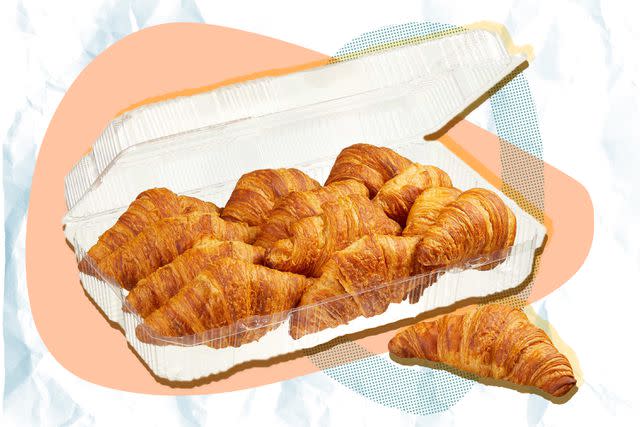This One Trick Will Cut Your Grocery Bill, According to a Grocer’s Daughter
This is a money-saving strategy I swear by.

Simply Recipes / Getty Images
My parents have owned a grocery store in Paraguay for over 40 years. For as far back as I can remember, I spent most of my non-school hours sweeping and mopping the floor, picking out rotten fruit from their crates, and stocking shelves. While I did my fair share of eye-rolling and moved like molasses during my chores, being in any grocery store feels like home to me—the space, lights, smells, and orderly cans and boxes lining shelves.
It’s been over two decades since I left Paraguay, but I still like making trips to the grocery store. (When I was past my pregnancy due date, I walked to and around my local Trader Joe's six times to trigger labor. My son was born a couple of hours after my last trip.) And now that I shop for a family of five, I'm at the store a lot and our grocery bill is high.
To save money, I buy produce in season, meat in bulk, and on-sale and store-brand everything. But my favorite trick for cutting down on my grocery bill comes from one thing I learned as a grocer's daughter: I pick products from the back of the shelf. It's the best way to cut back on food waste and save money.
Read More: 10 Foods I Never Store in My Pantry

Simply Recipes / Emma Christensen
Beat Grocery Stores' First In, First Out Strategy
Restocking shelves used to be a time-consuming chore for me. It's not just a matter of shoving the new products on the shelf. Rather, I would remove the existing items and wipe off dust from them. Then, I'd arrange the new products on the shelf before returning the existing ones in front. Products that expire sooner went towards the front.
This strategy is called first in, first out (FIFO) and grocery stores use it to sell older inventory first. Products in the front of the display will expire sooner than those in the back, so stores want to sell them first.
That's why I always pull items from the back—products that expire later—making sure I leave the display neat afterward. This is a practical way for me to reduce instances of tossing expired or rotten food and therefore save money on my grocery bill. It's a smart trick that works for all perishable products—canned and boxed goods, meat, baked goods, milk, and fruit and vegetables.
Read More: The 9 Pantry Items You Need To Toss Out, According to a Food Editor

Simply Recipes
For example, I was picking out croissants from Costco over the weekend. The 12-pack is stacked on a table in the baked goods section. It's a popular product that moves quickly, but sometimes I can pull a pack from the bottom that expires later and gives me a day or two longer to enjoy them before they go bad and I have to toss them.
The packs on the top of the stack expired on December 3, while I found some on the bottom that expired two days later. Looking back now, we could not have finished the croissants by December 3, so I'm glad for the extra time and money-saving.
Read the original article on Simply Recipes.


